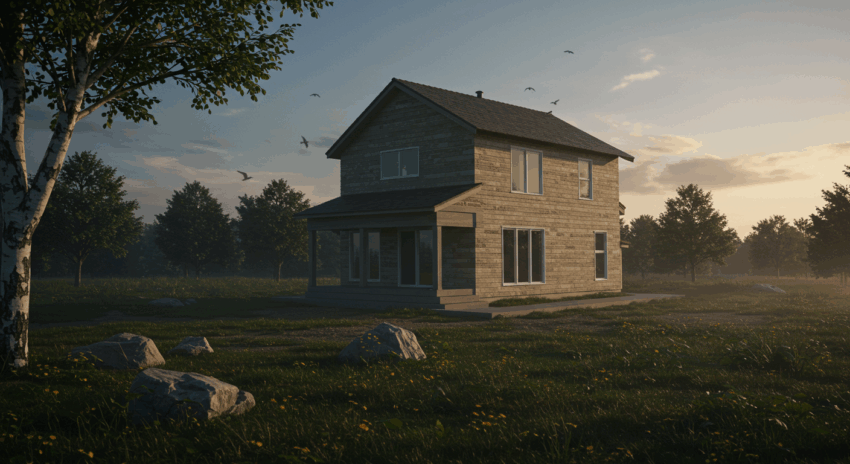Why 50% of families face unexpected expenses, particularly when undertaking significant projects like construction or renovations, is a critical question for anyone looking to manage their finances effectively. This isn’t just a statistic; it’s a reality that can derail budgets, create stress, and jeopardize the successful completion of your dream home or vital property upgrade. This article will delve into the common pitfalls leading to these unforeseen costs and, more importantly, provide you with actionable strategies and insights to anticipate, manage, and mitigate these financial shocks. Understanding these dynamics is the first step towards safeguarding your investment and ensuring your project stays on track.
Understanding the Scope of Unexpected Project Expenses
When embarking on a construction or renovation project, the initial budget often feels like a solid foundation. However, a multitude of factors can lead to unexpected expenses that weren’t accounted for. These aren’t minor miscalculations; they can be substantial additions that strain your financial resources. It’s crucial to recognize that even the most meticulously planned projects can encounter unforeseen challenges. The key is not to be surprised by the possibility of extra costs, but to be prepared for them.
These additional costs can stem from various sources, ranging from issues hidden within the existing structure of a building to sudden changes in material prices or even evolving project requirements. For homeowners and investors alike, these financial curveballs can be particularly daunting, transforming excitement into anxiety. The goal is to shift from a reactive stance to a proactive one, equipping yourself with knowledge and tools to navigate these common hurdles.

Common Culprits: Why Construction and Renovation Budgets Swell
Several recurring themes contribute to budget overruns in building and remodeling endeavors. Identifying these common culprits is essential for effective financial planning and risk management. Let’s explore some of the primary reasons why your project might cost more than initially anticipated:
- Unforeseen Site Conditions and Discoveries: Especially in renovations, what lies beneath the surface is often unknown until demolition begins. You might uncover issues like:
- Structural weaknesses requiring reinforcement.
- Outdated or faulty electrical wiring or plumbing that needs complete replacement to meet current codes.
- Pest infestations (e.g., termites) or mold growth that necessitate remediation.
- Unexpected asbestos or lead paint requiring specialist removal.
- Scope Creep and Design Changes: It’s natural for ideas to evolve as a project progresses. However, every change, no matter how small it seems, can have cost and time implications. Adding a feature, upgrading materials, or altering the layout mid-project are classic examples of scope creep. While some changes are desirable or even necessary, they must be carefully evaluated for their budgetary impact.
- Fluctuations in Material and Labor Costs: The price of building materials (lumber, steel, concrete, fixtures) can be volatile, influenced by market demand, supply chain disruptions, and broader economy trends. Similarly, labor costs can increase, especially if skilled tradespeople are in high demand or if the project timeline extends.
- Inaccurate Initial Estimates or Bids: Sometimes, the initial quote might be unrealistically low, either due to an oversight by the contractor or an attempt to secure the job. It’s also possible that the initial scope wasn’t detailed enough, leading to misunderstandings and later additions.
- Delays and Time Overruns: Delays caused by weather, material unavailability, subcontractor scheduling conflicts, or permit issues can extend the project duration. Longer projects often mean increased labor costs, equipment rental fees, and potentially financing costs.
- Regulatory or Code Changes: Building codes can be updated, and if your project spans a period where such changes come into effect, you might need to make adjustments to comply, often at an additional cost.
The Financial Impact of Unforeseen Project Costs
Unexpected expenses in construction or renovation don’t just mean a higher final bill; they can have a cascading effect on your overall personal finances. If you haven’t adequately prepared, you might find yourself needing to:
- Dip into Emergency Savings: Using funds earmarked for true emergencies (like job loss or medical bills) for project overruns can leave you vulnerable elsewhere.
- Take on Additional Debt: This could involve increasing a home equity line of credit, taking out a personal loan, or using high-interest credit cards, all of which add to your long-term financial burdens and impact your savings goals.
- Delay or Abandon Project Phases: You might have to compromise on your vision, postponing certain parts of the project or opting for lower-quality finishes than originally planned. In worst-case scenarios, projects can be halted indefinitely.
- Increase Stress and Strain Relationships: Financial pressure is a significant source of stress, which can impact your well-being and relationships, especially if decisions about how to cover extra costs lead to disagreements.
Understanding these potential repercussions underscores the importance of robust financial planning before a single hammer swings.
Proactive Strategies: Building a Defense Against Budget Blowouts
While you can’t eliminate all risks of unexpected expenses, you can significantly reduce their likelihood and impact with careful planning and smart strategies. Here’s how you can fortify your project budget:
- Meticulous Planning and Detailed Scope of Work: This is arguably the most critical step. Invest ample time in the planning phase. Work with architects, designers, and builders to create a highly detailed scope of work. The more specific your plans, material choices, and finishes are before work begins, the fewer surprises you’ll encounter. Request comprehensive documentation.
- Build a Substantial Contingency Fund: This is non-negotiable for any construction or renovation. A contingency fund is a percentage of your total estimated project cost set aside specifically for unforeseen expenses. For renovations, experts often recommend a contingency of 15% to 20%, or even higher for older properties with more unknowns. For new construction, 10% to 15% might be adequate. Avoid thinking of this as optional.
- Thoroughly Vet Professionals and Understand Contracts: Choose contractors and tradespeople with demonstrable experience and a solid track record. Check references and past projects. Ensure your contract is comprehensive, clearly outlining the scope, payment schedule, process for change orders, and dispute resolution. Understand what is included and, just as importantly, what is excluded from the bid.
- Factor in Material Price Escalation Clauses: For long projects, discuss with your contractor how potential material price increases will be handled. Some contracts may include escalation clauses, or you might agree to purchase and store certain materials early if feasible.
- Regular Site Meetings and Open Communication: Maintain open lines of communication with your project manager or contractor. Schedule regular site meetings to review progress, discuss any emerging issues promptly, and approve any changes in writing. This helps prevent misunderstandings and allows for timely decision-making.
- Phased Approach for Large Projects: If your project is extensive and your budget is tight, consider phasing it. Completing the project in manageable stages can make it easier to control costs and absorb any unexpected expenses that arise in one phase before moving to the next.
Navigating Unforeseen Costs When They Arise
Despite your best efforts, unexpected expenses can still materialize. When they do, it’s important to address them systematically rather than reactively. First, clearly understand the nature of the extra cost: Is it essential for safety or code compliance? Is it a desired upgrade, or an unforeseen problem? Request a detailed breakdown of the additional charges from your contractor.
Next, evaluate your options. Can the additional work be deferred? Are there alternative, more cost-effective solutions? Review your contingency fund – this is precisely what it’s for. If the unexpected cost exceeds your contingency, you’ll need to explore other avenues, such as reallocating funds from less critical parts of the project, or considering the financial impact of securing additional funding. Transparency with your contractor about your budget constraints at this stage is crucial.
Conclusion: Financial Foresight for Project Success
The statistic that 50% of families face unexpected expenses serves as a potent reminder of the financial uncertainties inherent in life, especially when undertaking complex endeavors like construction and renovation. However, these challenges are not insurmountable. By understanding the common sources of budget overruns, implementing robust planning strategies, building an adequate contingency fund, and maintaining clear communication with experienced professionals, you can significantly mitigate these risks.
Ultimately, successful project management is as much about astute financial planning as it is about design and construction. Avoid being caught off guard. Proactive financial diligence will not only help keep your project on budget but also reduce stress, allowing you to focus on the exciting prospect of your completed renovation or new build. Your dream project deserves a solid financial foundation.
Frequently Asked Questions (FAQ)
- What is a reasonable contingency fund percentage for a home renovation project?
- For home renovations, it’s wise to budget a contingency fund of 15% to 20% of the total estimated project cost. For older homes or projects with many unknowns (e.g., extensive gut renovations), some experts even suggest going as high as 25%. This fund is specifically for unforeseen issues like hidden structural damage, outdated systems needing upgrades, or unexpected material price spikes.
- How can I effectively track expenses during my construction project to prevent budget surprises?
- Effective expense tracking is crucial. Consider these methods:
-
- Use a detailed spreadsheet or budgeting software to log every expense against your initial budget categories.
- Request regular, itemized invoices from your contractor and review them carefully.
- Implement a formal change order system. Any deviation from the original plan, no matter how small, should be documented with its cost implication and approved by you in writing before work proceeds.
- Hold regular budget review meetings with your contractor to compare actual spending against planned spending.
- What are the first steps I should take if I realize my construction or renovation project is going significantly over budget?
- If your project is trending over budget, act quickly:
-
- Pause and Assess: Halt non-essential work temporarily to understand the full scope of the overrun.
- Communicate: Have an urgent meeting with your contractor to identify the reasons for the increased costs and review all expenses to date.
- Review Scope: Identify any remaining project elements that could be modified, deferred, or eliminated to save money (value engineering).
- Explore Funding: Assess your contingency fund. If it’s depleted or insufficient, review your options for additional finance, considering the costs and risks of each.
- Document Everything: Keep meticulous records of all discussions, decisions, and revised costings.



